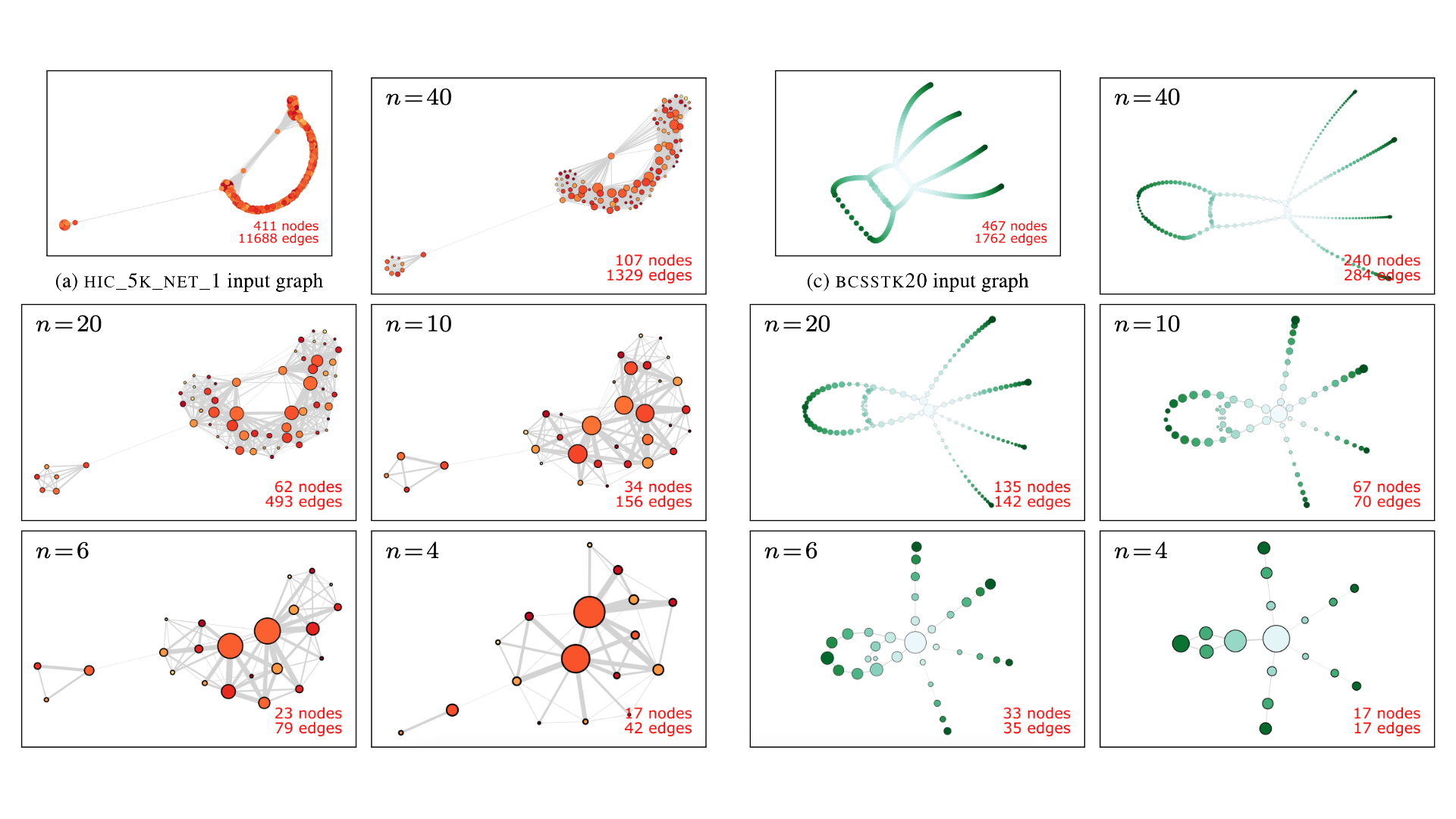Homology-Preserving Multi-Scale Graph Skeletonization Using Mapper on Graphs
Paul Rosen, Mustafa Hajij, Bei Wang
Room: 106
2023-10-22T03:00:00ZGMT-0600Change your timezone on the schedule page
2023-10-22T03:00:00Z

Abstract
Node-link diagrams are a popular method for representing graphs that capture relationships between individuals, businesses, proteins, and telecommunication endpoints. However, node-link diagrams may fail to convey insights regarding graph structures, even for moderately sized data of a few hundred nodes, due to visual clutter. We propose to apply the mapper construction---a popular tool in topological data analysis---to graph visualization, which provides a strong theoretical basis for summarizing the data while preserving their core structures. We develop a variation of the mapper construction targeting weighted, undirected graphs, called mapper on graphs, which generates homology-preserving skeletons of graphs. We further show how the adjustment of a single parameter enables multi-scale skeletonization of the input graph. We provide a software tool that enables interactive explorations of such skeletons and demonstrate the effectiveness of our method for synthetic and real-world data.